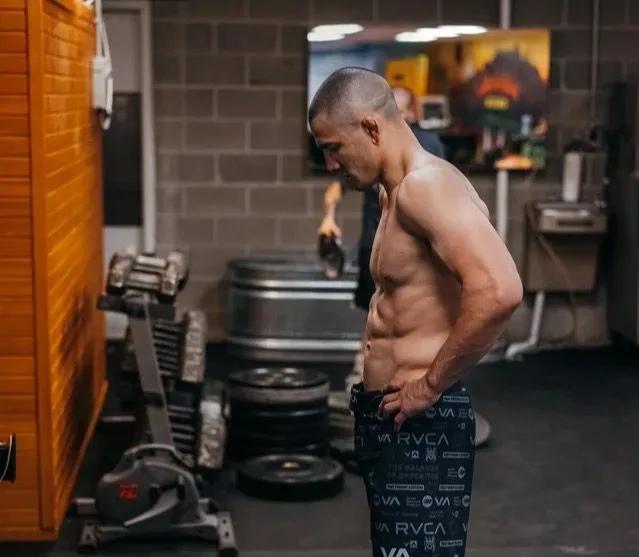Story content
One of the crucial factors in achieving successful athletic peak performance is to execute a relatively high level of explosive power. This is especially true in mixed martial arts (MMA) since several MMA foundational movements require explosive components to be effective.
A combination of strength and speed is typically needed in getting explosive power. One way to achieve both is through weight training. To understand more of these, here’s everything you need to know about explosive power and weight training for MMA.
Explosive Power and Weight Training
Explosive power is the ability of a person to perform a movement with an explosive intent or at a maximum force in the shortest possible time. Conceptually, it can be summed up with the formula: Force (F) x Velocity (V) = Power (P). Simply put, you must be stronger and faster to exhibit sufficient maximal strength.
Here are movements that need explosive power:
- Sprinting
- Leaping
- Jumping
- Hopping
- Bounding
- Cutting
- Kicking
- Juking
- Punching
- Diving
- Throwing
- Rotating
Considering these movements, almost every form of sports, like combat sports, athletics, gymnastics, target sports, multisport race, or even ball sports typically found on online sports betting platforms, require explosive power.
Athletes who need to generate a quick burst of maximal effort often use weight training to improve their power output. MMA fighters focus more on muscular endurance than strength and power. However, training for strength and power is crucial to improving their optimal athletic development.
The following exercises are parts of a generic weight training plan great for MMA athletes and novices alike.
Basic Weight Training For MMA Athletes And Amateurs
Olympic Lifts
Olympic lifts start from lifting a barbell off the ground to raising it to your shoulders while simultaneously slightly squatting to lifting the barbell over your head in a full standing position. It requires flexibility, coordination, and timing. Otherwise, you’ll break your wrists, shoulders, upper back, or hips.
Since it could be a challenging or worse, dangerous exercise, there are other alternatives for it. But before that, there’s a need for you to understand Olympic lift derivatives.
- Clean. Pick up the bar from the floor, then lift it to either the upper chest or chest while ass to the ground (ATG).
- Hang clean. Pick up the bar at the thigh (not the floor), then lift it to either the upper chest or chest while ATG.
- Power clean. Pick up the bar at the thigh, then lift to either the upper chest or chest while squatting halfway (not too much, just a bit higher than ATG).
- Hang power clean. Pick up the bar at the thigh, then lift to either the upper chest or chest while squatting at a right angle halfway (higher than the power clean).
Alternatives For Olympic Lifts For Beginners
If you’re still anxious about doing the said derivatives, here are alternatives to Olympic lifts that you can try even without wearing a lifting belt:
1. Medicine Ball Hang Clean
- For any level
- Equipment: A medicine ball
Instructions:
- Hold a medicine ball at hip level while feet on the ground hip-width apart.
- Raise toes as high as possible while shrugging both shoulders to your ears.
- Drop the ball but don’t move your hand on the surface.
- Then squat right before the ball bounce back.
- Rotate hands under the ball to catch it.
- Repeat
2. Explosive Tire Flips
- For intermediate level
- Equipment: A medium-sized tire
Instructions:
- Stand close to the tire with feet wider than hip-width apart.
- Squat and grab the tire with an underhand grip but straighten your arms.
- Lift the tire explosively while heels off the ground and flat back (imagine jumping with a tire on straight hands).
- Lower the tire on the same spot or flip it on the other side, then repeat.
3. Barbell Power Jumps
- For advanced level
- Equipment: Empty barbell
Instructions:
- Place the empty barbell on your upper back, then move your knees and hips to a quarter squat position.
- Jump off the ground.
- Land smoothly without noise.
- After landing, return to the quarter squat position.
- After going back to the quarter squat position, stand tall and repeat.
4. Barbell Squat
Barbell squats are resistance and compound exercise that develops your flexibility, core strength, strong thighs, and powerful abdominal muscles. If done correctly, it can enhance your total body development and strength, allowing you to excel more in combat sports.
5. Romanian Deadlift
It might be easier compared to the Olympic lifts. Still, the Romanian deadlift (RDL) improves our deep core stabilizers’ endurance strength and biomechanics of standing hip extension and flexion, strengthening the posterior chain muscles. In addition, RDL generally improves body awareness and fundamental movement skills, which are all crucial in overall MMA performance.
Final Thoughts
Many MMA athletes find weightlifting great for achieving the ideal physique for the sport, as long as used intelligently and correctly. It’s crucial to be confident first in performing a movement pattern before adding an explosive component to any exercise.


